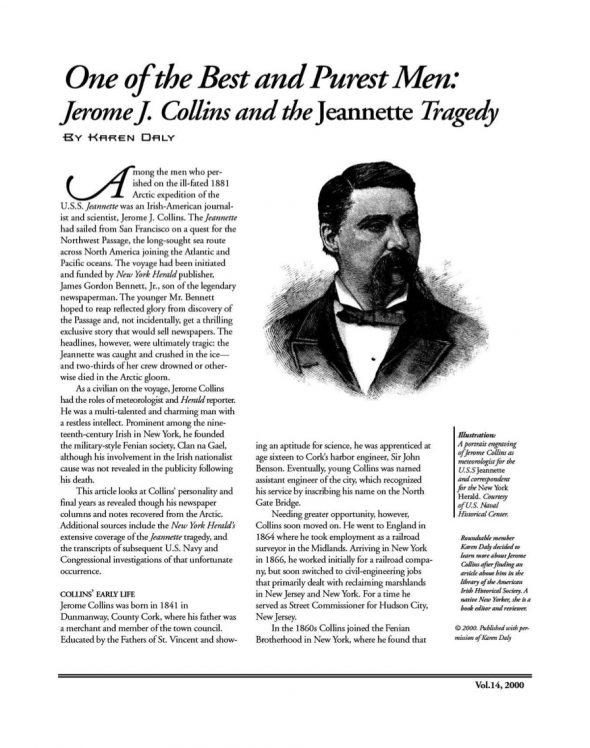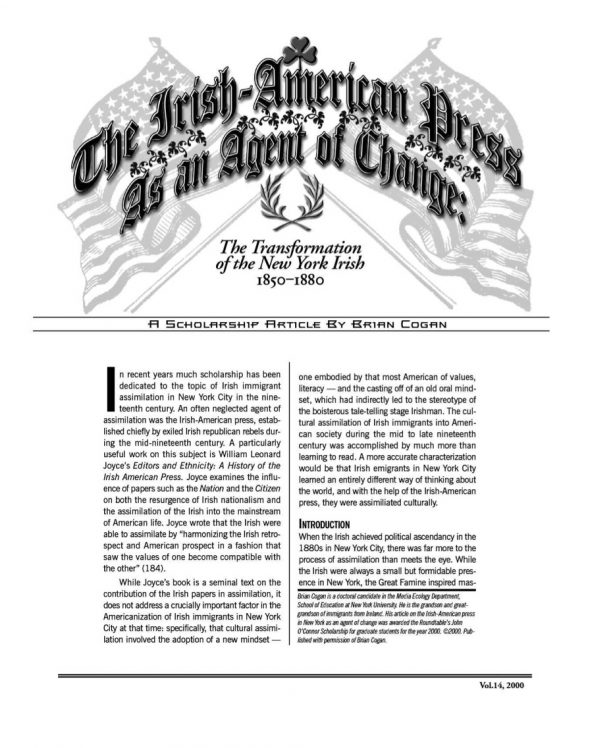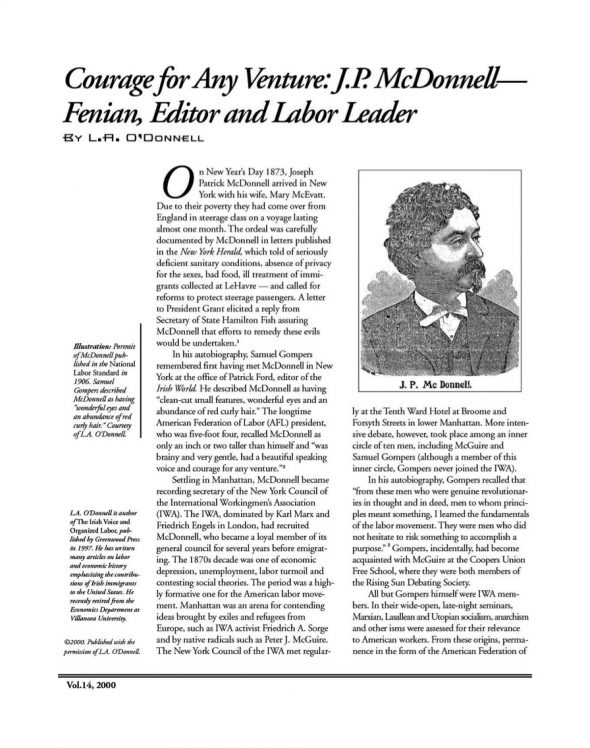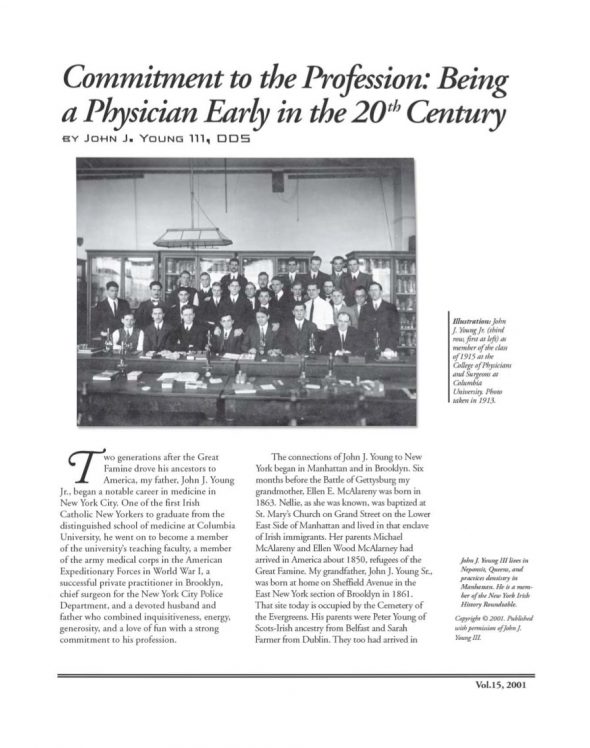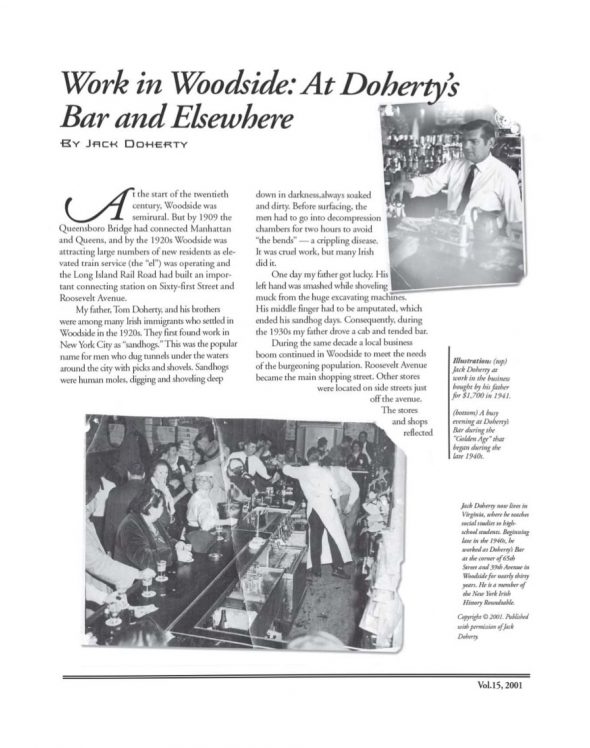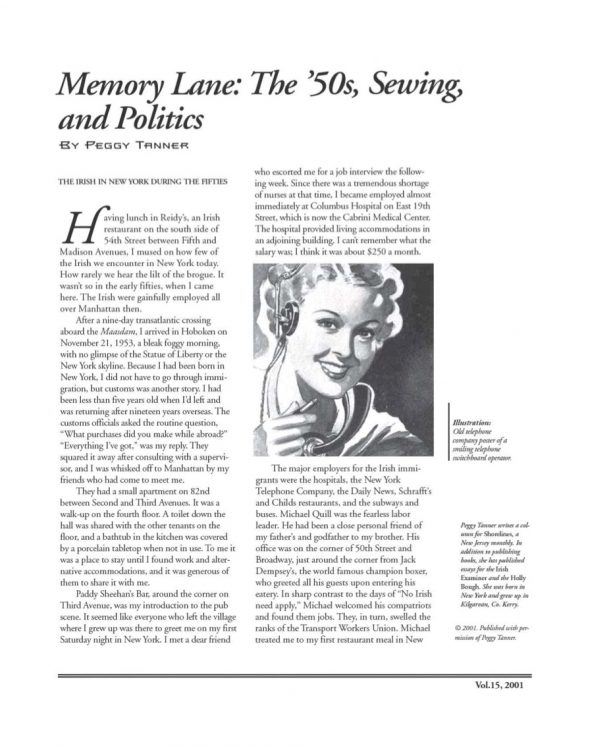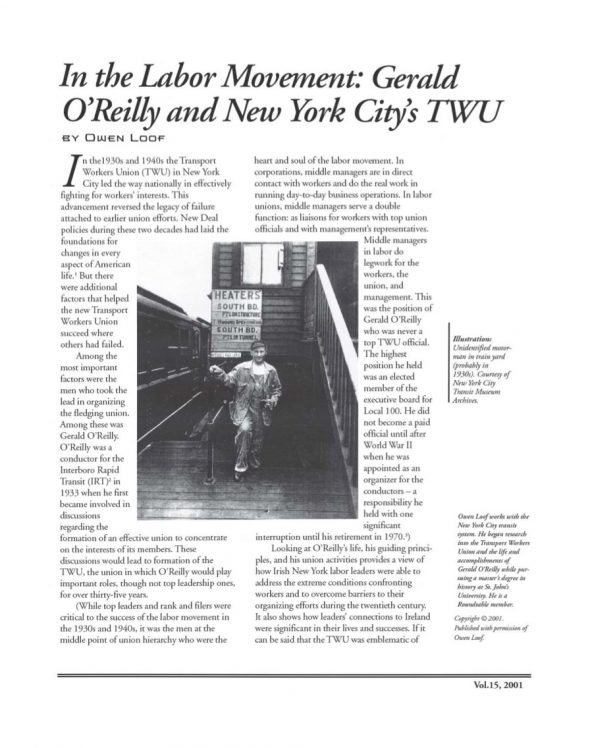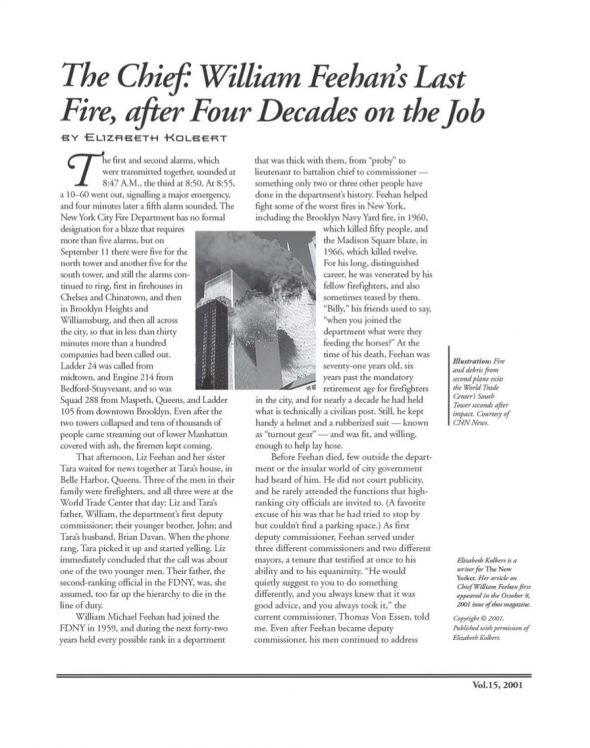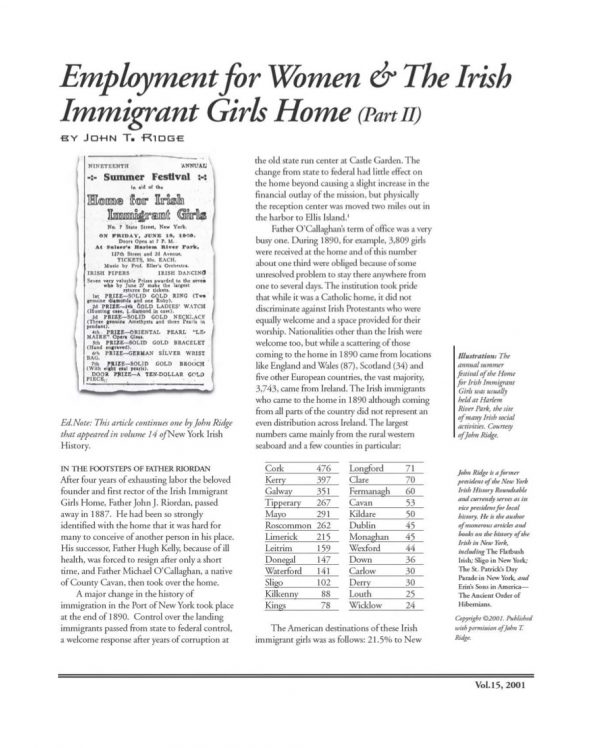New York Irish History Roundtable - Journal Articles
One of the Best and Purest Men - Jerome J. Collins and the Jeannette Tragedy
Author: Karen Daly
Publication Year: 2000
Journal Volume: 14
Article Reference: NYIHR-V14-03
One of the Best and Purest Men: Jerome J. Collins and the Jeannette Tragedy BY KAREN DALY among the men who perished on the ill-fated 1881 Arctic expedition of the U.S.S. Jeannette was an Irish-American journalist and scientist, Jerome J. Collins. The Jeannette had sailed from San Francisco on quest for the Northwest Passage, the long-sought sea route across North America joining the Atlantic and Pacific oceans. The voyage had been initiated and funded by New York Herald publisher, James Gordon Bennett, Jr., son of the legendary... [Read Full Article]
The Transformation of the New York Irish 1850-1880
Author: Brian Cogan
Publication Year: 2000
Journal Volume: 14
Article Reference: NYIHR-V14-04
In recent years much scholarship has been one embodied by that most American of values, dedicated to the topic of Irish immigrant literacy and the casting off of an old oral mindassimilation in New York City in the nineset, which had indirectly led to the stereotype of teenth century. An often neglected agent of the boisterous tale-telling stage Irishman. The culassimilation was the Irish-American press, estabtural assimilation of Irish immigrants into Amerilished chiefly by exiled Irish republican rebels durcan society during the mid to... [Read Full Article]
Employment for Women and the Irish Immigrant Girls Home
Author: John T. Ridge
Publication Year: 2000
Journal Volume: 14
Article Reference: NYIHR-V14-05
Ireland, to make a journey of over four 1879 in Ireland marked the thousand five hundred miles alone. The NATIONAL LINE. LEarNer EVERY SATURDAY beginning of agricultural distress. A child said her mother was dead and her NEW YORK, QUEENSTOWN 2 LIVERPOOL,Ind EVERY WEDNESDAY, be NEW YORK AND LONDON, Direct. crop failure reminiscent of the time father deserted her and went to England T 1 of the Great Hunger brought near starvation tofour years ago. A month ago Rosie's cousin i+ many districts in Ireland. It seemed that within Marshall,... [Read Full Article]
Courage for Any Venture - J.D. McDonnell - Fenian, Editor and Labor Leader
Author: L.A. O'Donnell
Publication Year: 2000
Journal Volume: 14
Article Reference: NYIHR-V14-06
Courage for Any Venture: J.D. McDonnell Fenian, Editor and Labor Leader BY L.A. O'DONNELL
On New Year's Day 1873, Joseph Patrick McDonnell arrived in New York with his wife, Mary McEvatt. Due to their poverty they had come over from England in steerage class on a voyage lasting almost one month. The ordeal was carefully documented by McDonnell in letters published in the New York Herald, which told of seriously deficient sanitary conditions, absence of privacy for the sexes, bad food, ill treatment of immigrants collected at LeHavre... [Read Full Article]
Commitment to the Profession - Being a Physician Early in the 20th Century
Author: John J. Young III, DDS
Publication Year: 2001
Journal Volume: 15
Article Reference: NYIHR-V15-01
Two generations after the Great Famine drove his ancestors to America, my father, John J. Young Jr., began notable career in medicine in New York City. One of the first Irish Catholic New Yorkers to graduate from the distinguished school of medicine at Columbia University, he went on to become a member of the university's teaching faculty, a member of the army medical corps in the American Expeditionary Forces in World War I, a successful private practitioner in Brooklyn, chief surgeon for the New York City Police Department, and a... [Read Full Article]
Work in Woodside - At Dohertys Bar and Elsewhere
Author: Jack Doherty
Publication Year: 2001
Journal Volume: 15
Article Reference: NYIHR-V15-02
The start of the twentieth century, Woodside was semirural. But by 1909 the Queensboro Bridge had connected Manhattan and Queens, and by the 1920s Woodside was attracting large numbers of new residents as elevated train service (the "el") was operating and the Long Island Rail Road had built an important connecting station on Sixty-first Street and Roosevelt Avenue.
My father, Tom Doherty, and his brothers were among many Irish immigrants who settled in Woodside in the 1920s. They first found work in New York City as... [Read Full Article]
Memory Lane - The 50s, Sewing, and Politics
Author: Peggy Tanner
Publication Year: 2001
Journal Volume: 15
Article Reference: NYIHR-V15-03
Having lunch in Reidy's, an Irish restaurant on the south side of 54th Street between Fifth and Madison Avenues, I mused on how few of the Irish we encounter in New York today. How rarely we hear the lilt of the brogue. It wasn't so in the early fifties, when I came here. The Irish were gainfully employed all over Manhattan then.
After a nine-day transatlantic crossing aboard the Maasdam, I arrived in Hoboken on November 21, 1953, a bleak foggy morning, with no glimpse of the Statue of Liberty or the New York skyline. Because... [Read Full Article]
In the Labor Movement - Gerald OReilly and New York Citys TWU
Author: Owen Loof
Publication Year: 2001
Journal Volume: 15
Article Reference: NYIHR-V15-04
In the 1930s and 1940s the Transport Workers Union (TWU) in New York City led the way nationally in effectively fighting for workers' interests. This advancement reversed the legacy of failure attached to earlier union efforts. New Deal policies during these two decades had laid the foundations for changes in every aspect of American life.' But there were additional factors that helped the new Transport Workers Union succeed where others had failed. Among the most important factors were the men who took the lead in organizing the... [Read Full Article]
The Chief - William Feehans Last Fire, after Four Decades on the Job
Author: Elizabeth Kolbert
Publication Year: 2001
Journal Volume: 15
Article Reference: NYIHR-V15-05
The first and second alarms, which were transmitted together, sounded at 8:47 A.M., the third at 8:50. At 8:55, a 10-60 went out, signaling a major emergency, and four minutes later a fifth alarm sounded. The New York City Fire Department has no formal designation for a blaze that requires more than five alarms, but on September 11 there were five for the north tower and another five for the south tower, and still the alarms continued to ring, first in firehouses in Chelsea and Chinatown, and then in Brooklyn Heights and Williamsburg, and... [Read Full Article]
Employment for Women & The Irish Immigrant Girls Home (Part I1)
Author: John T. Ridge
Publication Year: 2001
Journal Volume: 15
Article Reference: NYIHR-V15-06
Summer Festival in aid of the Home for Irish Immigrant Girls No. State Street, New York. the old state run center at Castle Garden. The change from state to federal had little effect on the home beyond causing a slight increase in the financial outlay of the mission, but physically the reception center was moved two miles out in the harbor to Ellis Island.' Father O' Callaghan's term of office wasa very busy one. During 1890, for example, 3,809 girls were received at the home and of this number about one third were obliged... [Read Full Article]

